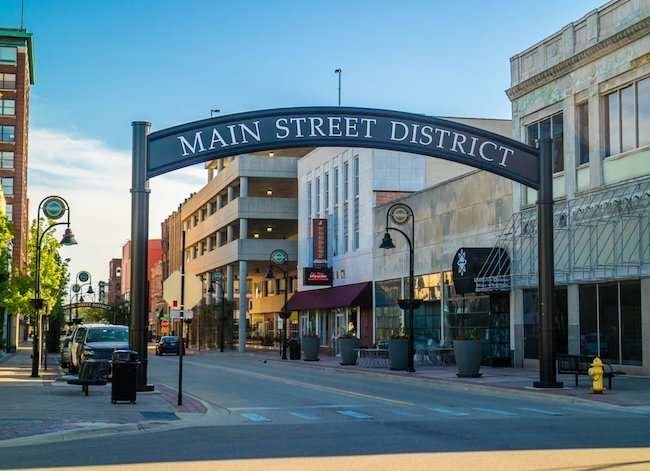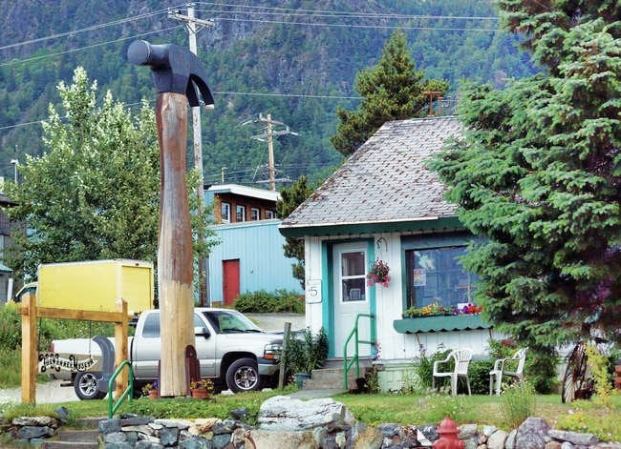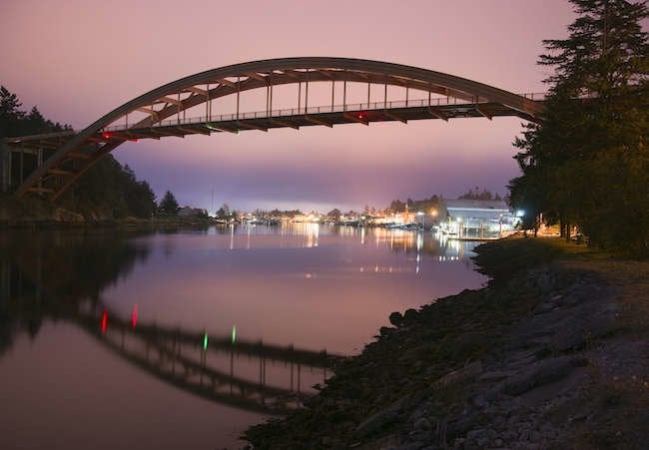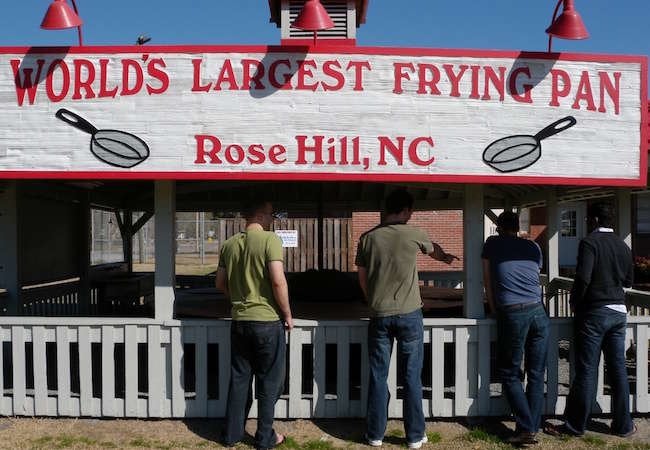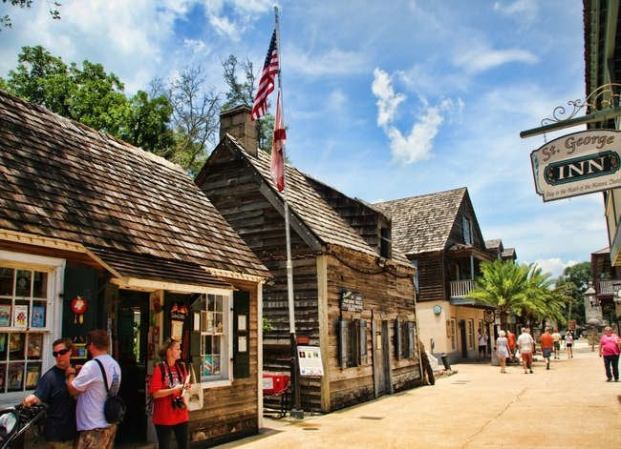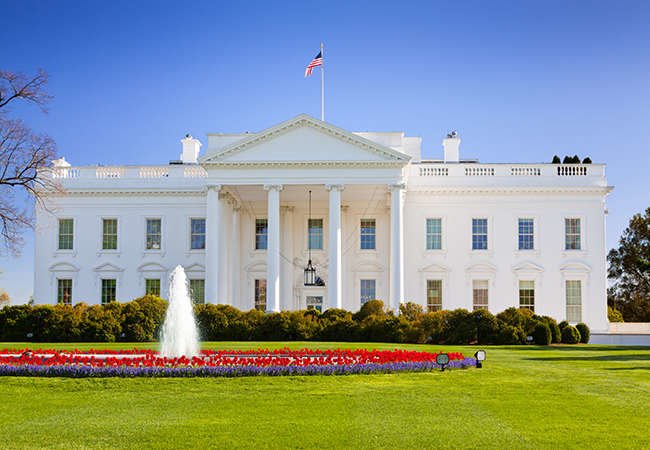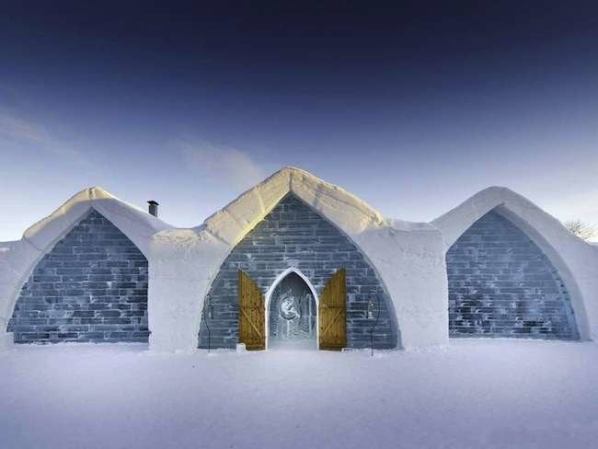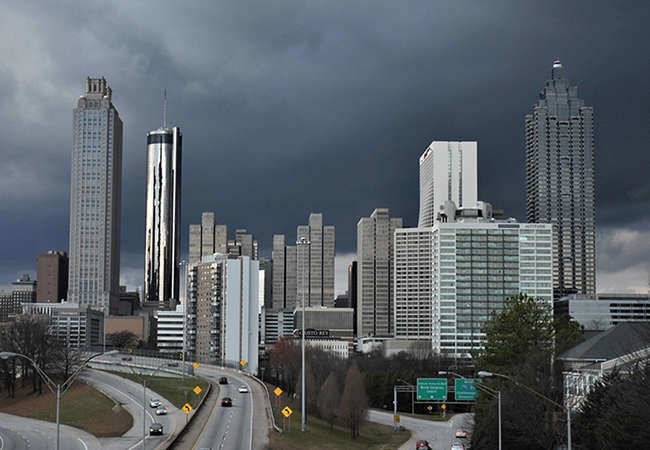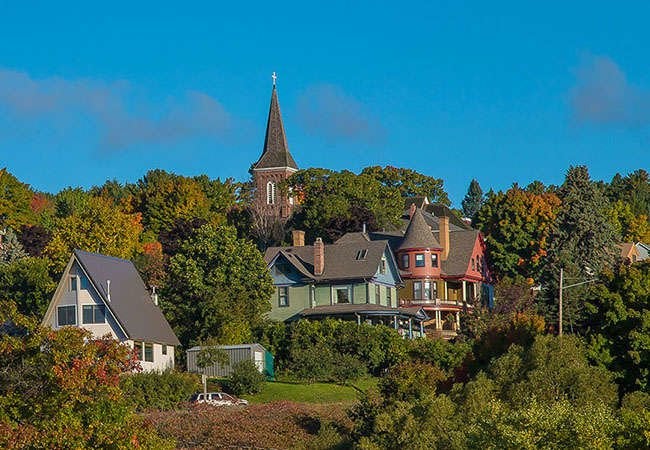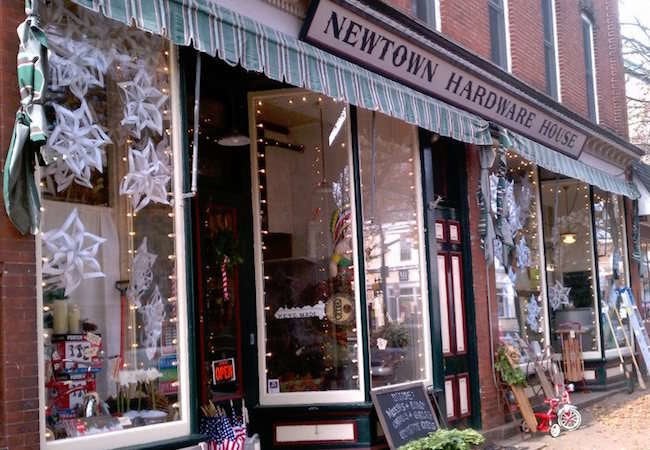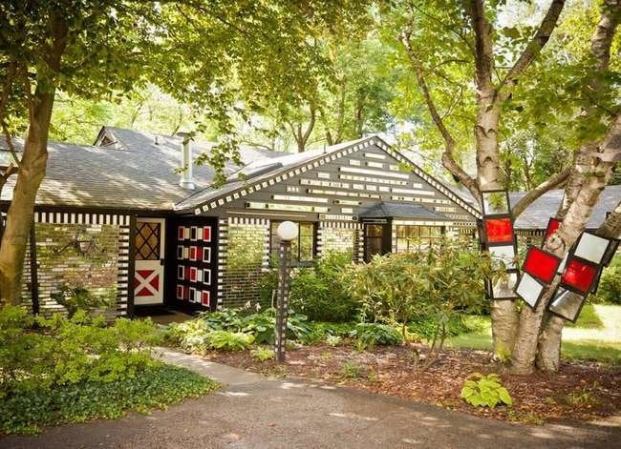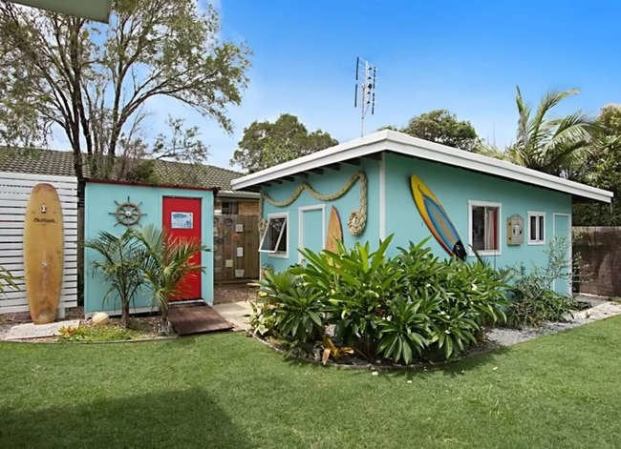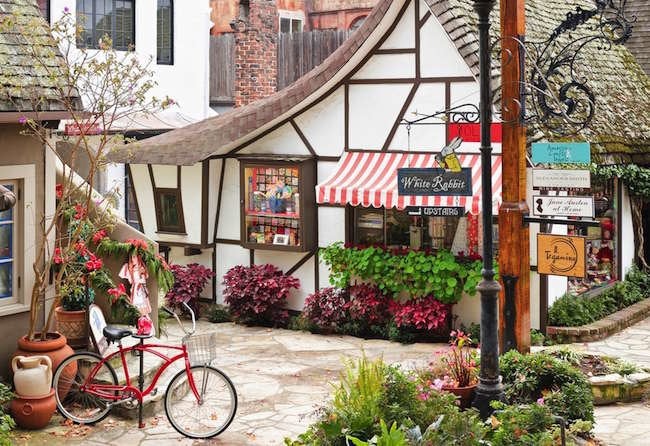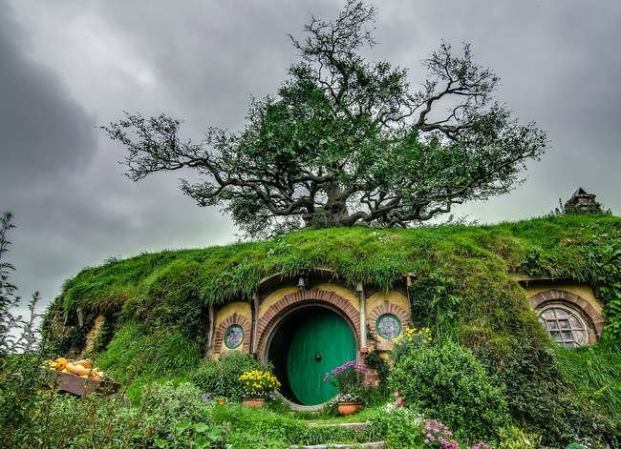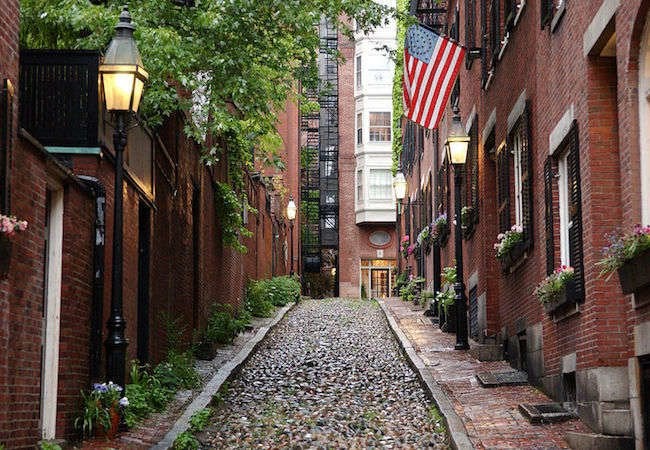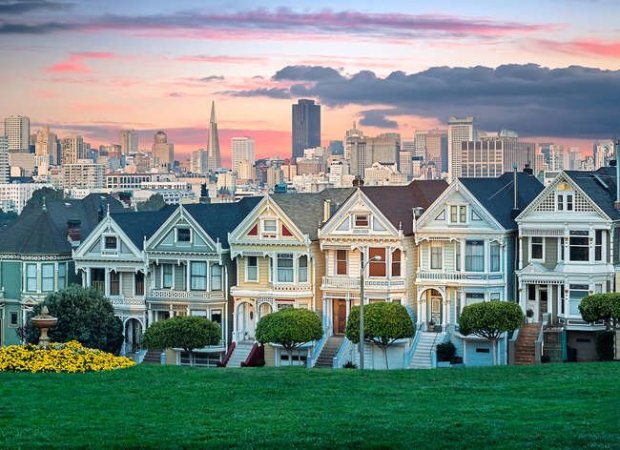We may earn revenue from the products available on this page and participate in affiliate programs. Learn More ›
Metropolis Reborn
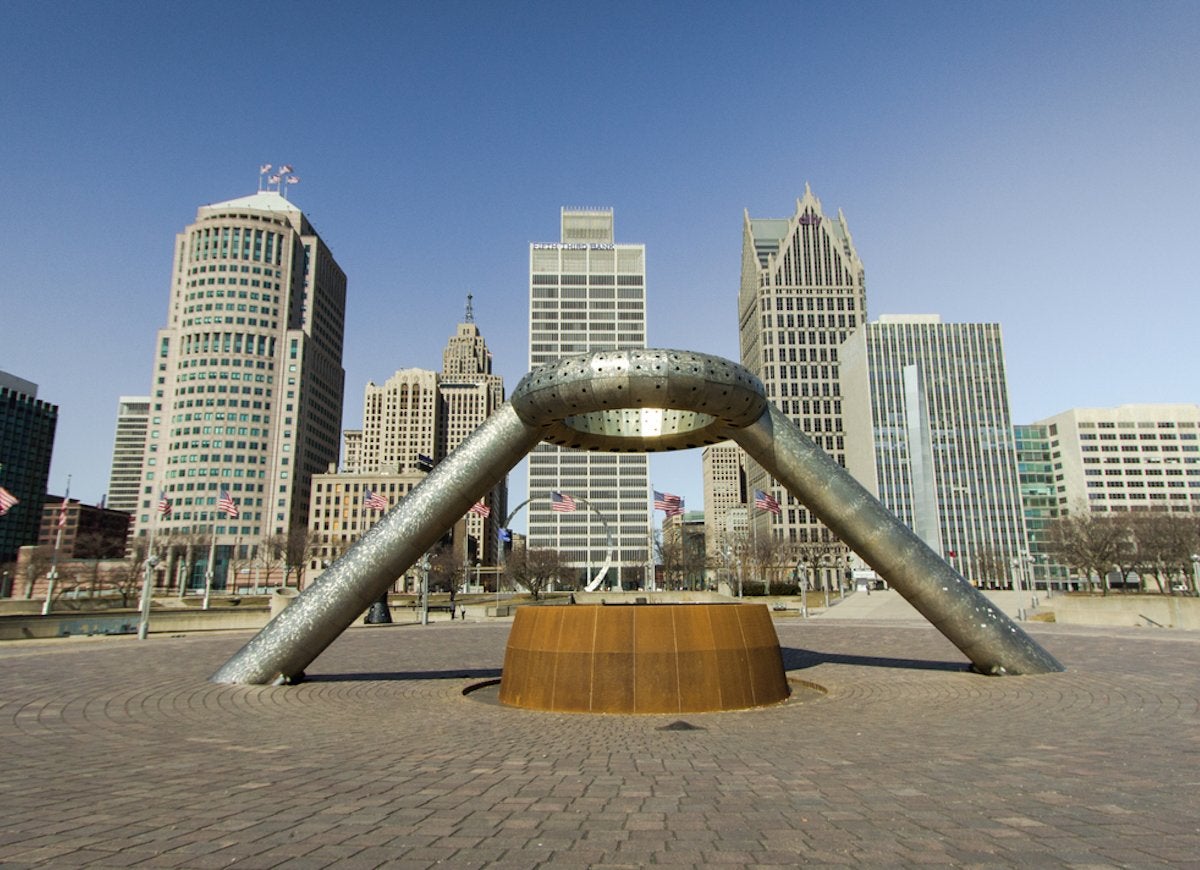
The revival of U.S. downtowns is a mixed blessing that has brought brighter prospects for some and increased displacement for others. Over the past 30 years, developers and investors have been transforming old industrial buildings, turning them into trendy shopping centers and mixed-use spaces. The result? City centers that offer tourists and residents alike attractive urban spaces that are walkable, green, and filled with art. Here are 16 up-and-coming downtowns to watch.
Rockford, Illinois
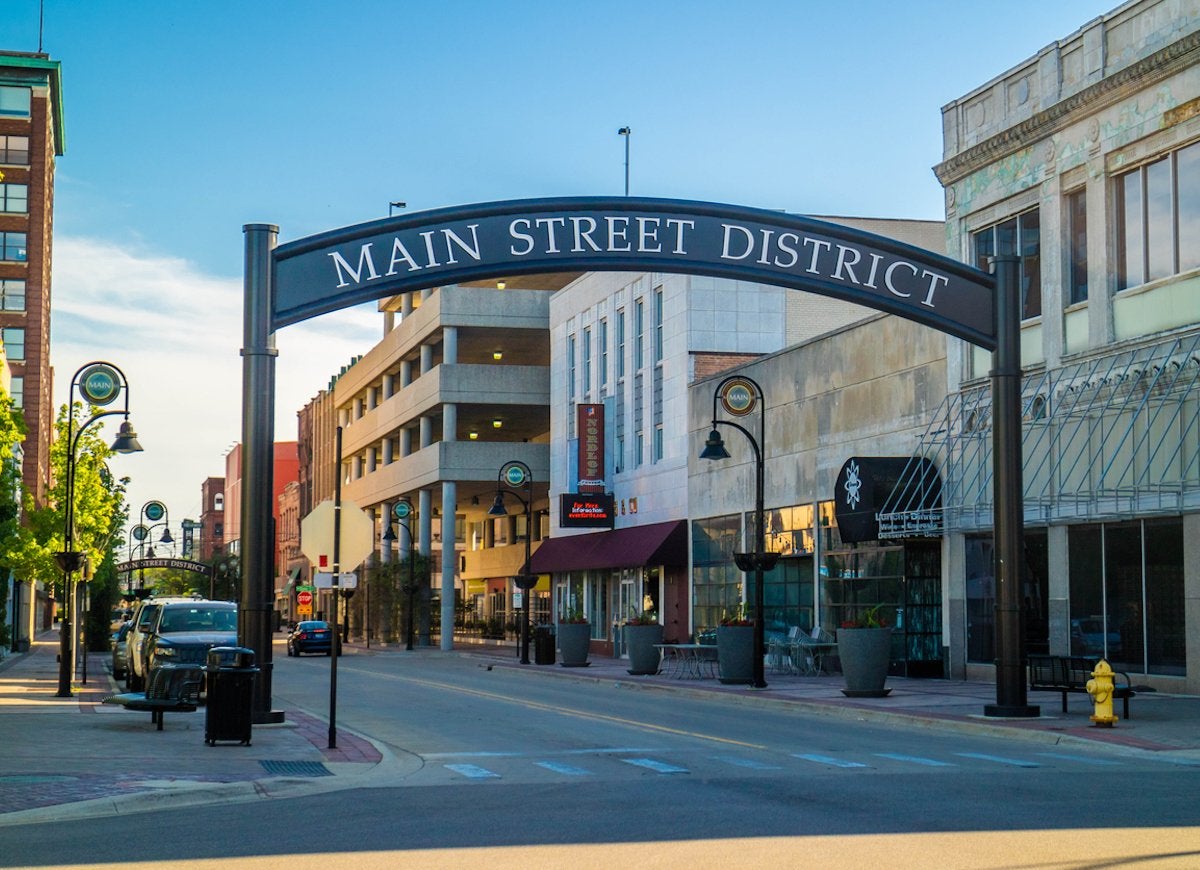
How do you salvage city pride? By resurrecting and repurposing legacy buildings, thereby revitalizing the face—and spirit—of a downtown. The 20th century manufacturing hub of Rockford, Illinois, once known for its knitting and screw-making industries, is making a comeback thanks to private investment and state-run tax breaks that offer a 25 percent credit for renewal projects that qualify.
Detroit, Michigan
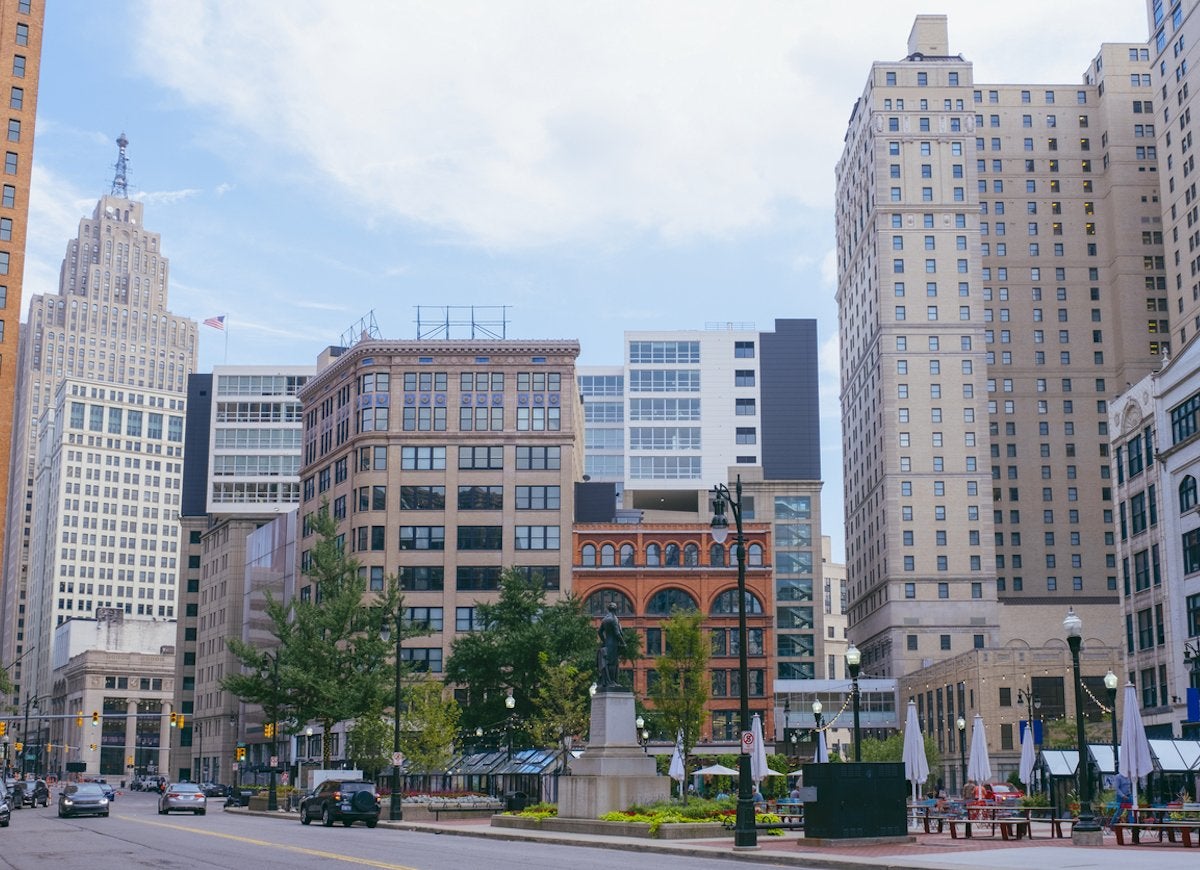
Urban renewal can be controversial, as demonstrated by Detroit’s “success” story. Headlines tout “Detroit’s Big Comeback” after its 2013 bankruptcy, but the buzz mainly surrounds investors like billionaire Dan Gilbert, who brought his Quicken Loans company to the Motor City. Yet while things do seem to be looking up, a new book warns that Detroit’s comeback is more myth than reality for the city’s poor.
Indianapolis, Indiana
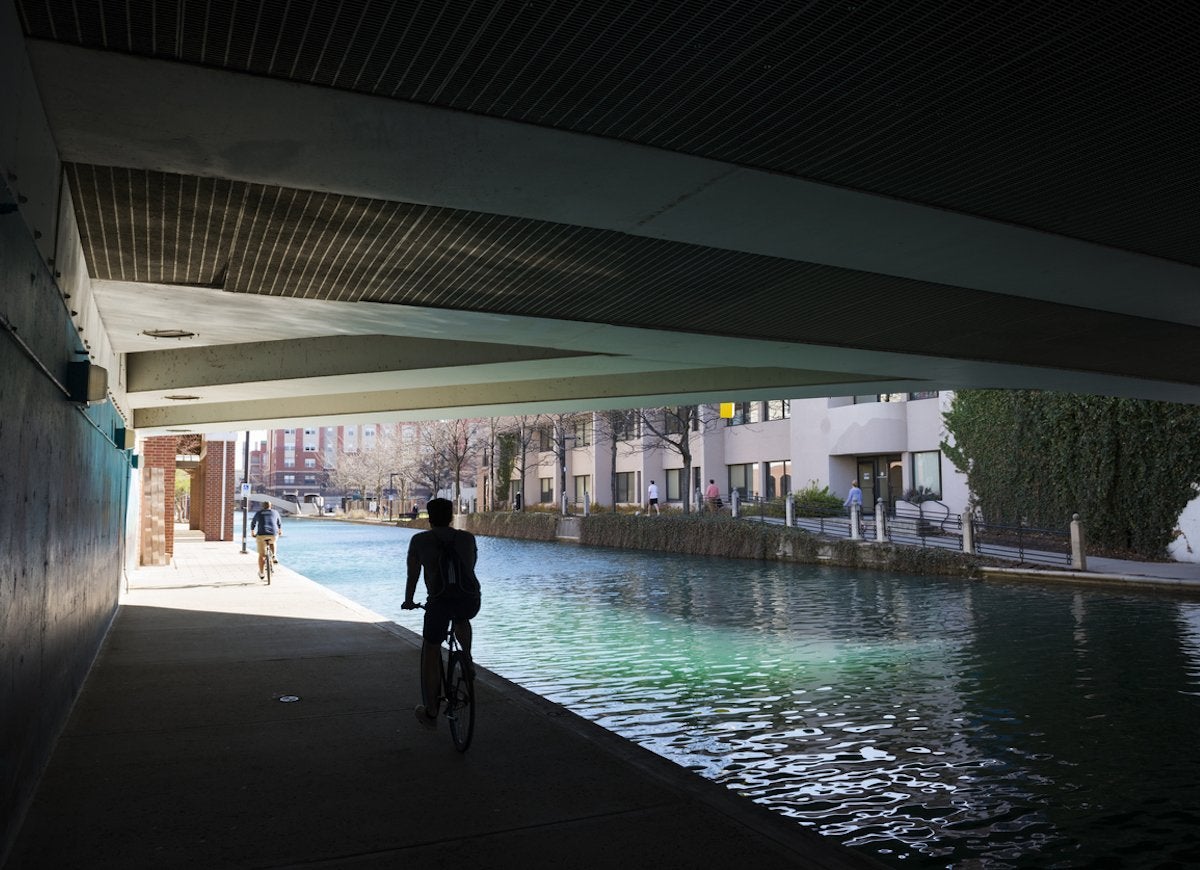
Walkability is one of the major factors contributing to the resurgence of Indianapolis, the state capital. In 2013, the city completed its Cultural Trail, an eight-mile bike and pedestrian path that cost $63 million to build. The benefits of this ambitious project include increased urban connectivity, greater tourism, and economic growth.
Hartford, Connecticut
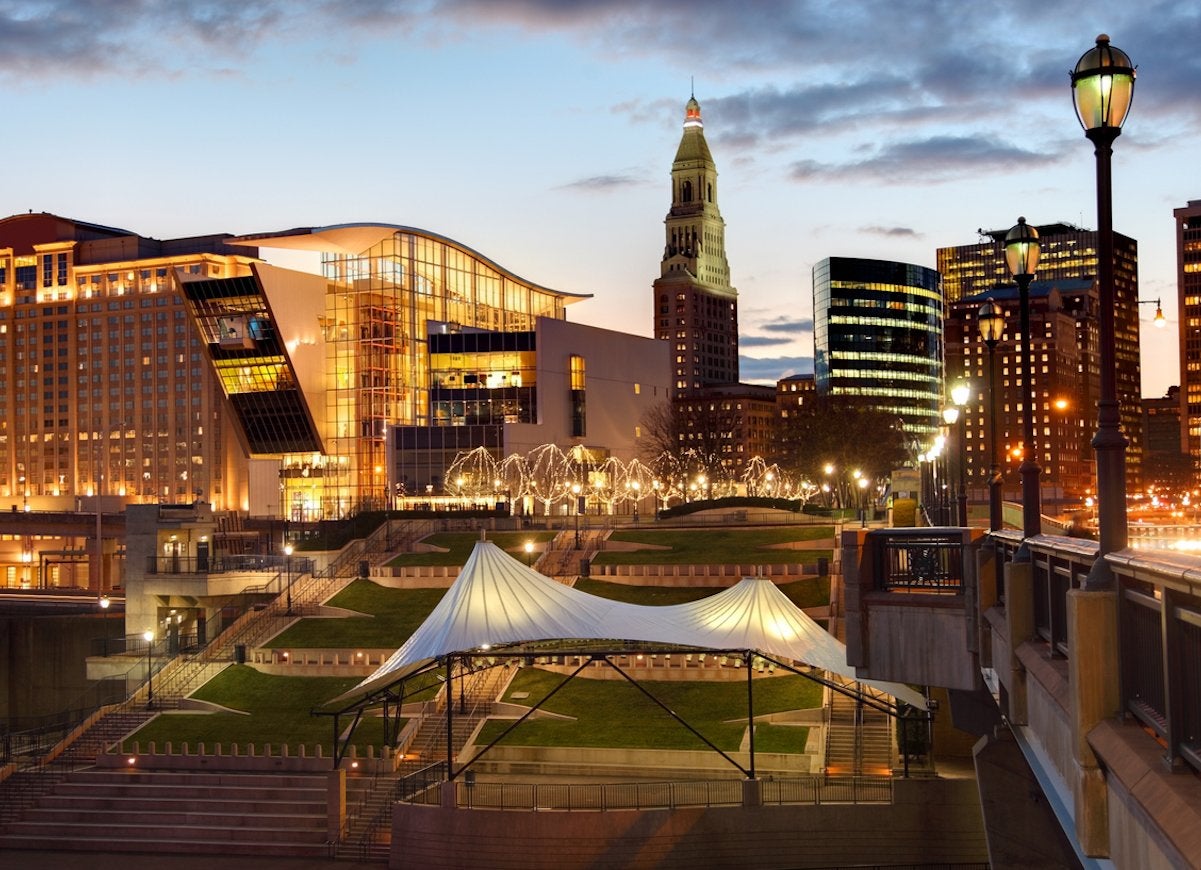
Despite Hartford’s storied past—Mark Twain wrote many of his famous works while living there—the city suffered a decline in manufacturing in the 1980s and ’90s and the collapse of the real estate market in the 2000s. In recent years, improved public transportation and worker retraining programs have helped inject downtown Hartford with much-needed energy and opportunities.
Pittsburgh, Pennsylvania
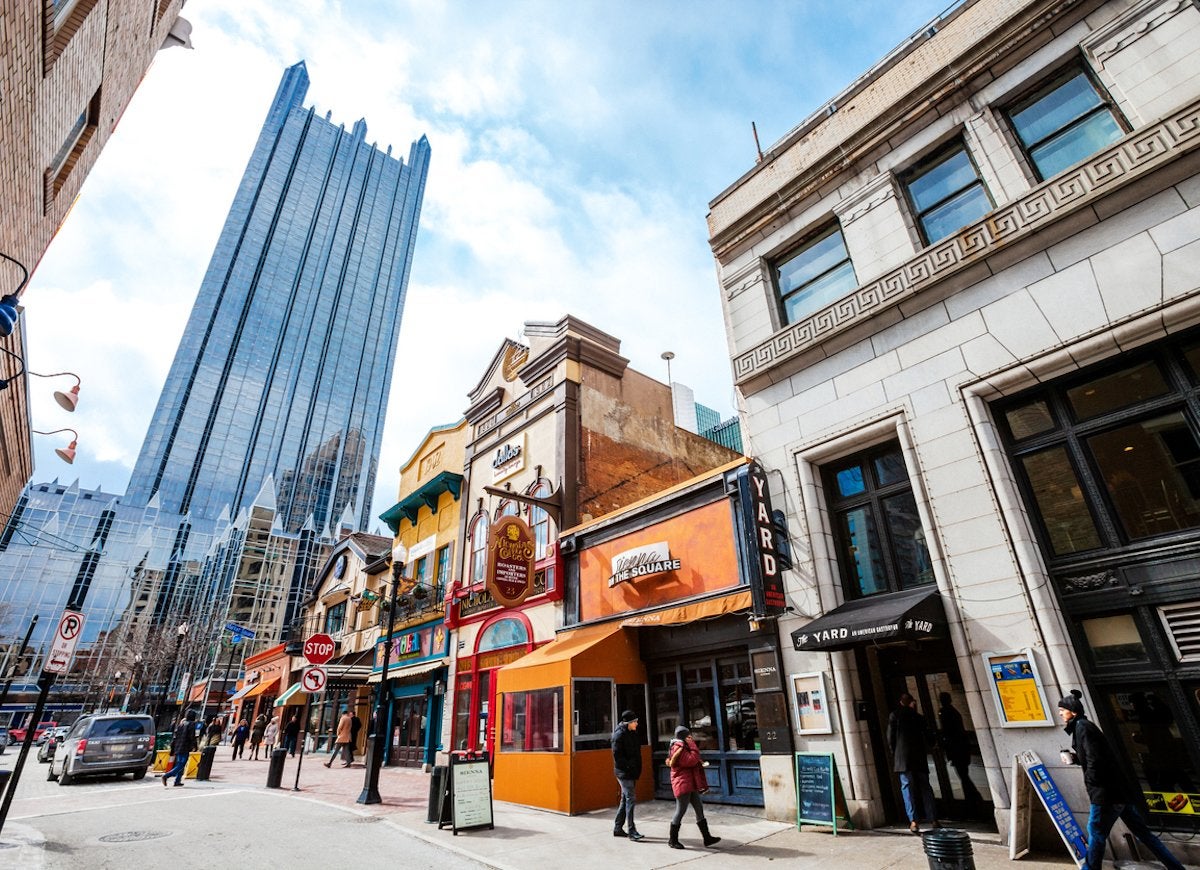
Realtor.com’s number one downtown success story, Pittsburgh is experiencing noteworthy growth, buoyed by increased home values and a population that, while not growing, has stopped sliding. The efforts of the nonprofit Pittsburgh Cultural Trust are a big reason for the city’s boom. The organization, founded in 1984, has renovated and constructed performance and gallery spaces, commissioned public arts projects, and created parks and recreation areas that draw residents and tourists to the 14-block Cultural District.
Sacramento, California
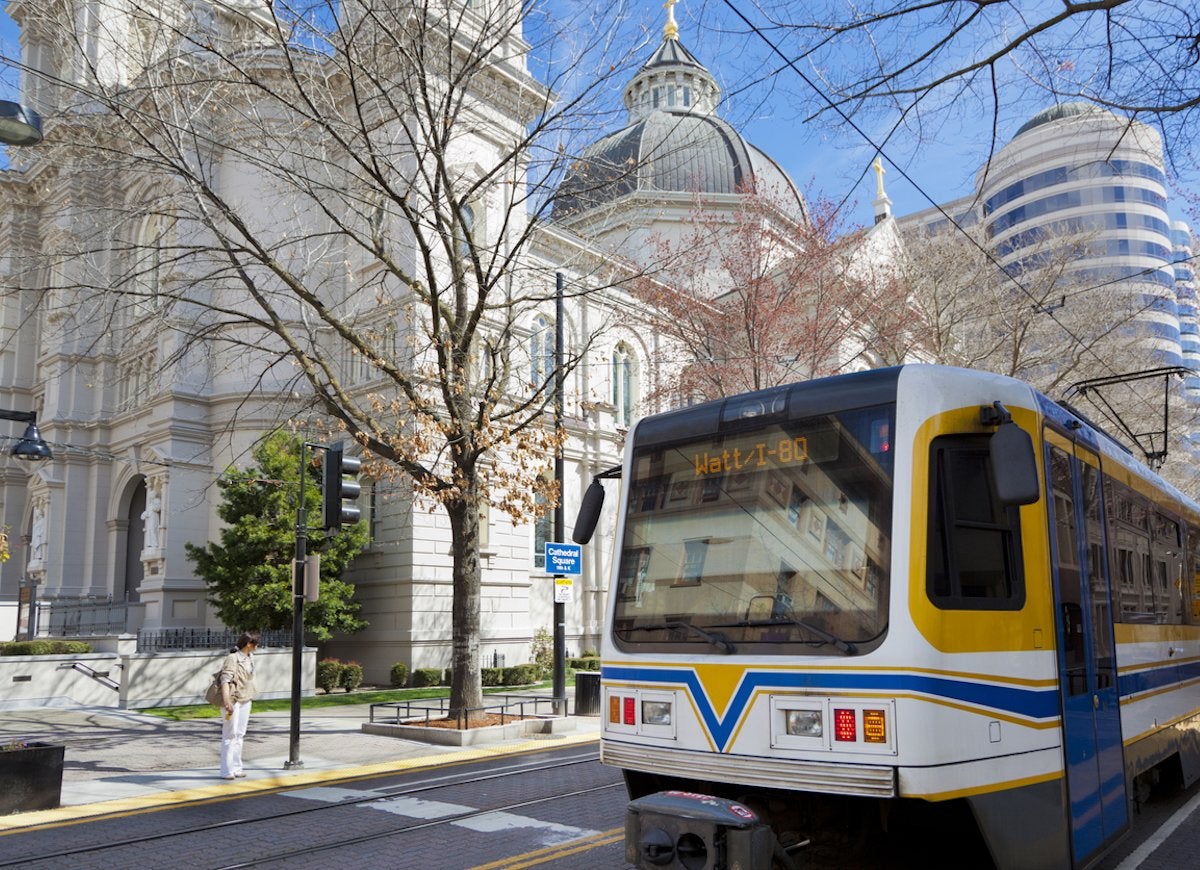
You would think that the state capital of California would be a happening place, but until recently that hasn’t been the case. Thanks to a $3.2 billion investment, Sacramento, once a boring “government town,” is now generating buzz. City attractions include an up-and-coming restaurant culture, downtown residences, plenty of retail, a healthy start-up environment, and the Golden 1 Center, a $558 million event arena that opened in 2016 and is the home of the Sacramento Kings NBA franchise.
Birmingham, Alabama
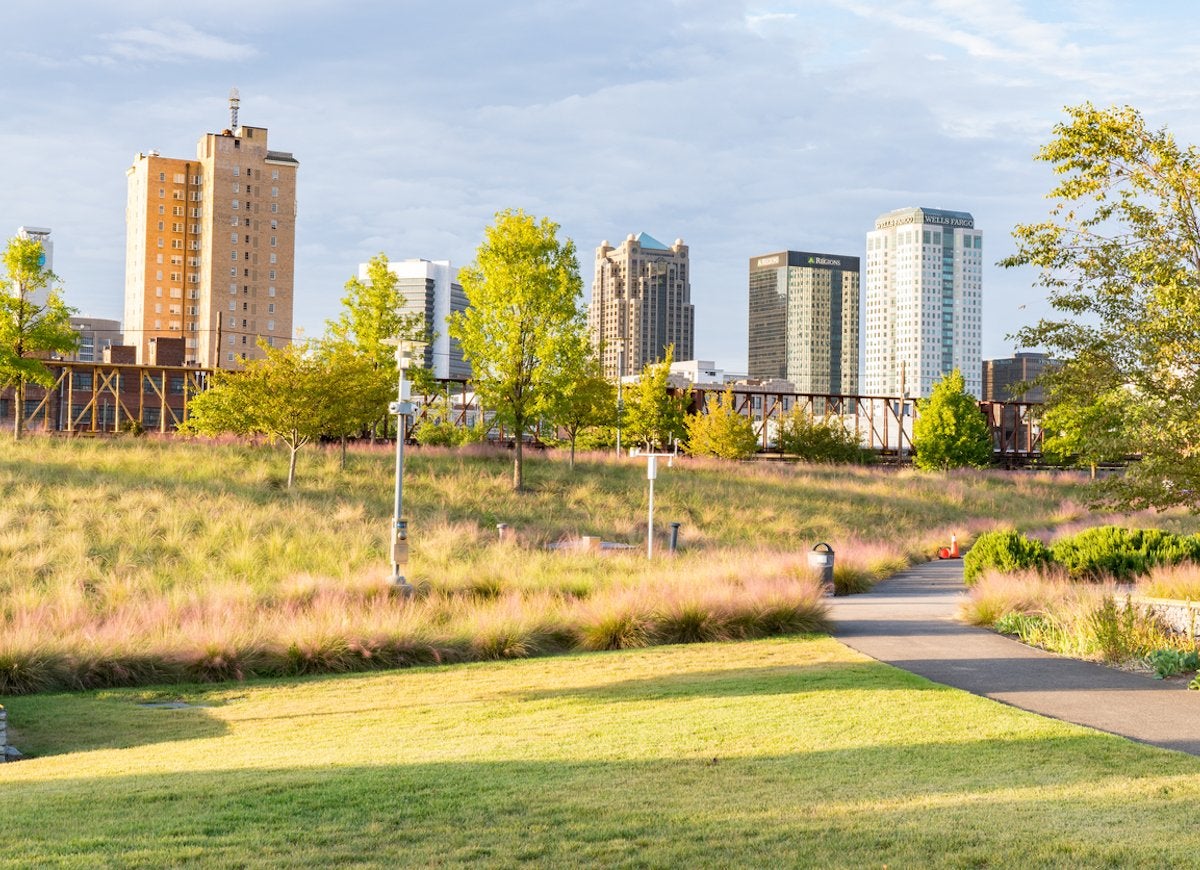
Birmingham has had a lot to overcome, including a reputation for deeply ingrained racism and an economic decline hastened by the demise of the steel industry in the 1980s. In recent years, developers have capitalized on the city’s well-preserved historic buildings, revamping a closed Dr Pepper plant to create Pepper Place, an entertainment, dining, and retail destination that boasts one of Alabama’s largest farmers’ markets. As well, Railroad Park, a 19-acre green space completed in 2010, provides recreation areas and venues for concerts and cultural events. Birmingham is also an important stop on the U.S. Civil Rights Trail, which connects 110 sites across 15 states.
Chattanooga, Tennessee
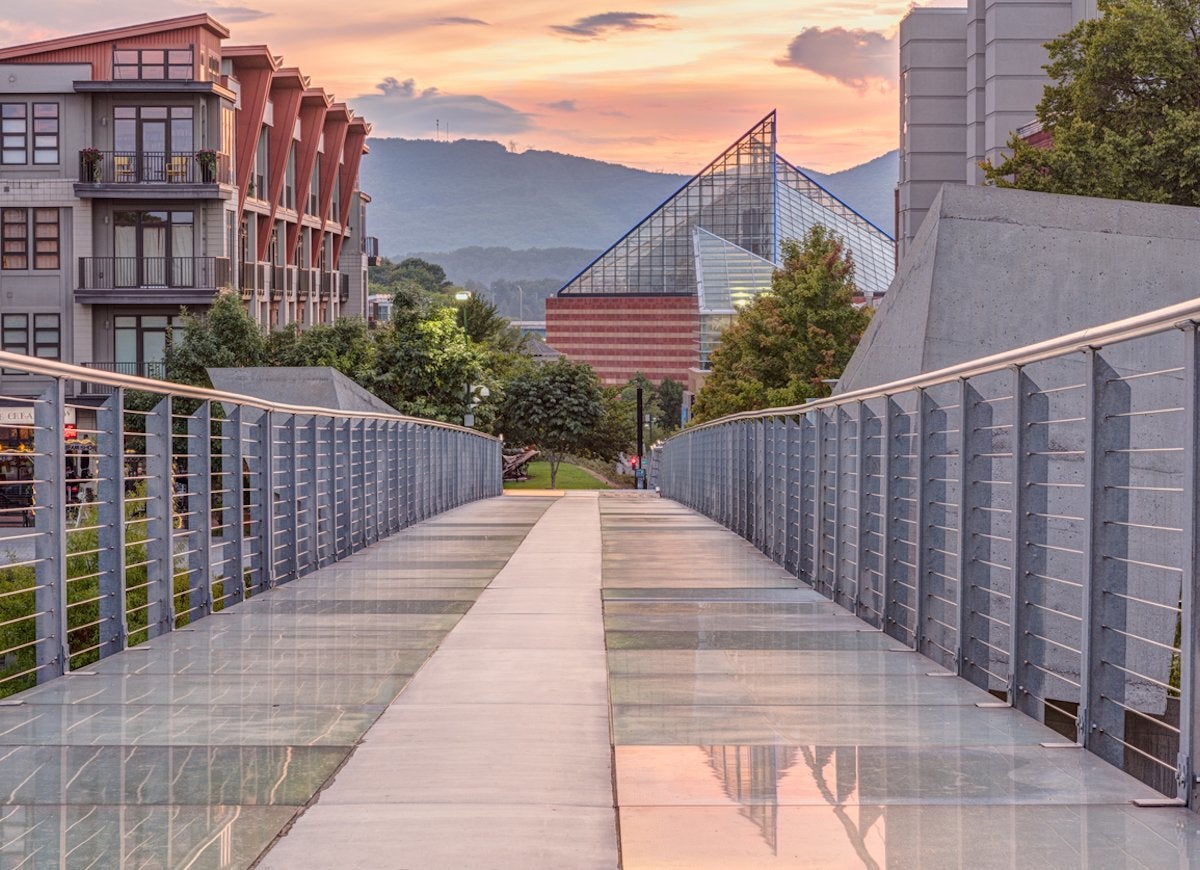
A former manufacturing town (Coca-Cola and MoonPies are still local specialties), Chattanooga’s city center is hot, hot, hot, drawing high-tech job seekers and music-loving tourists alike. The shadow side of its success? An affordable housing crisis and “radical socio-demographic change”—in other words, an influx of mostly white professionals are pushing African Americans out of downtown.
Cranford, New Jersey
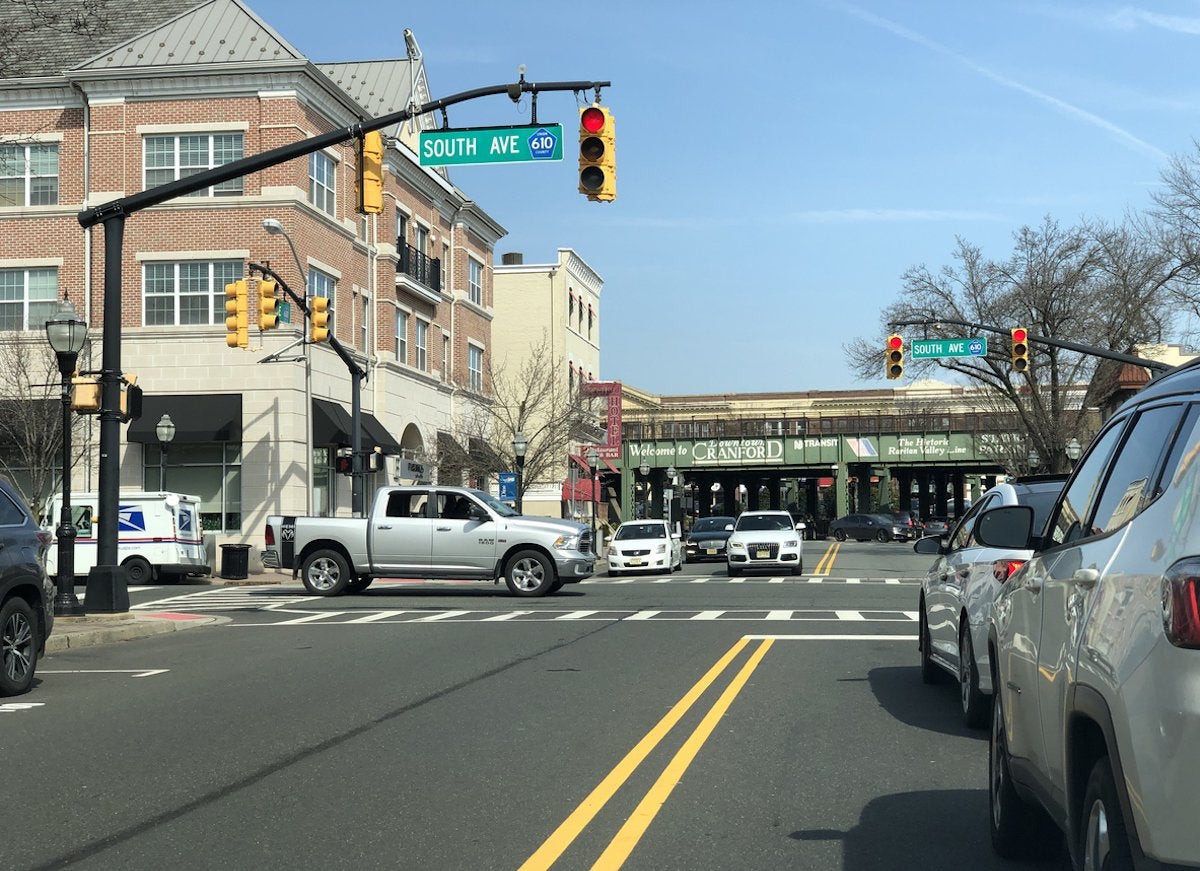
A bona fide local all-star, Cranford won a statewide contest for the best downtown in New Jersey. Blending a family-friendly vibe with businesses that cater to young, post-grad professionals, Cranford is famous for good eats, locally owned boutiques, and plenty of fun outdoor events.
Los Angeles, California
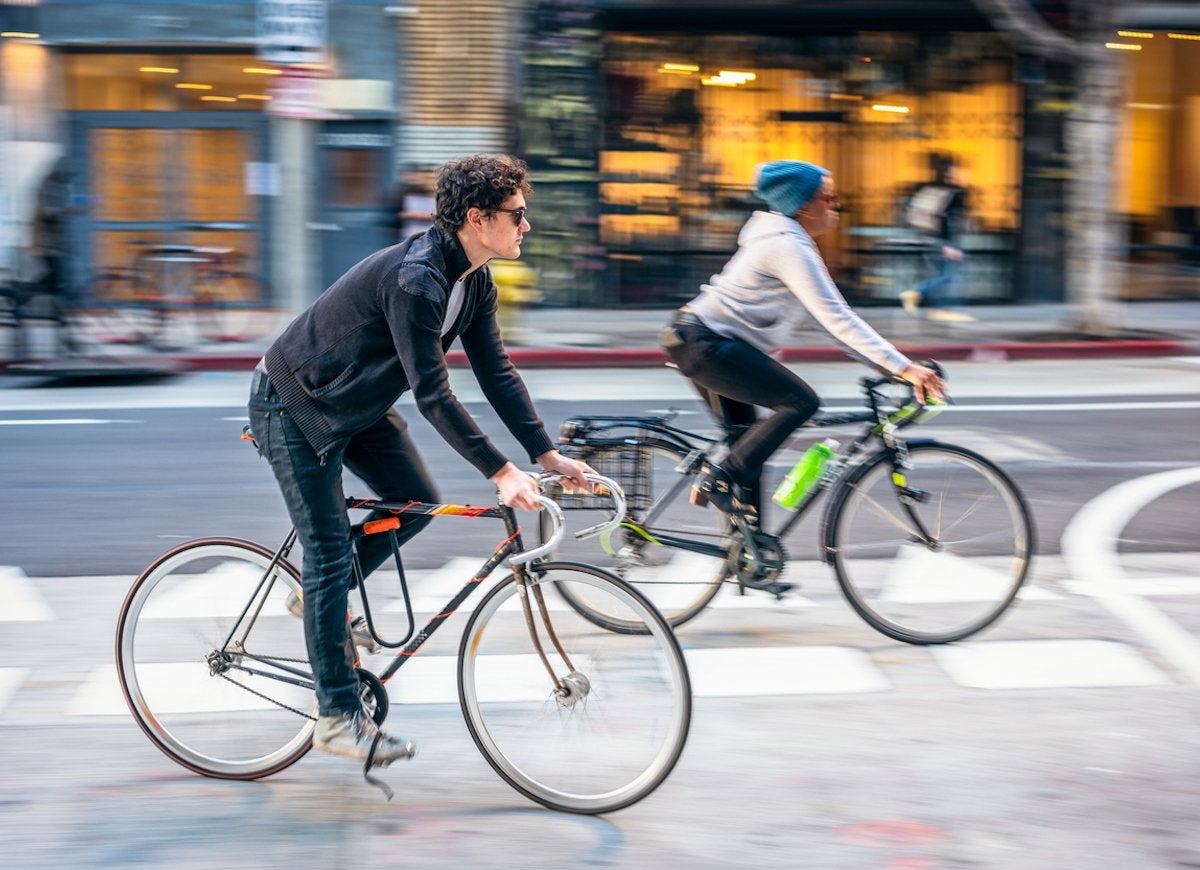
The key to downtown L.A.’s comeback? An emphasis on entertainment and live venues, rather than office space and skyscrapers. In the words of David Shulman, a real estate analyst interviewed by Forbes, “Nightlife and streetscapes trump fluorescent light and cubicles.”
Baton Rouge, Louisiana
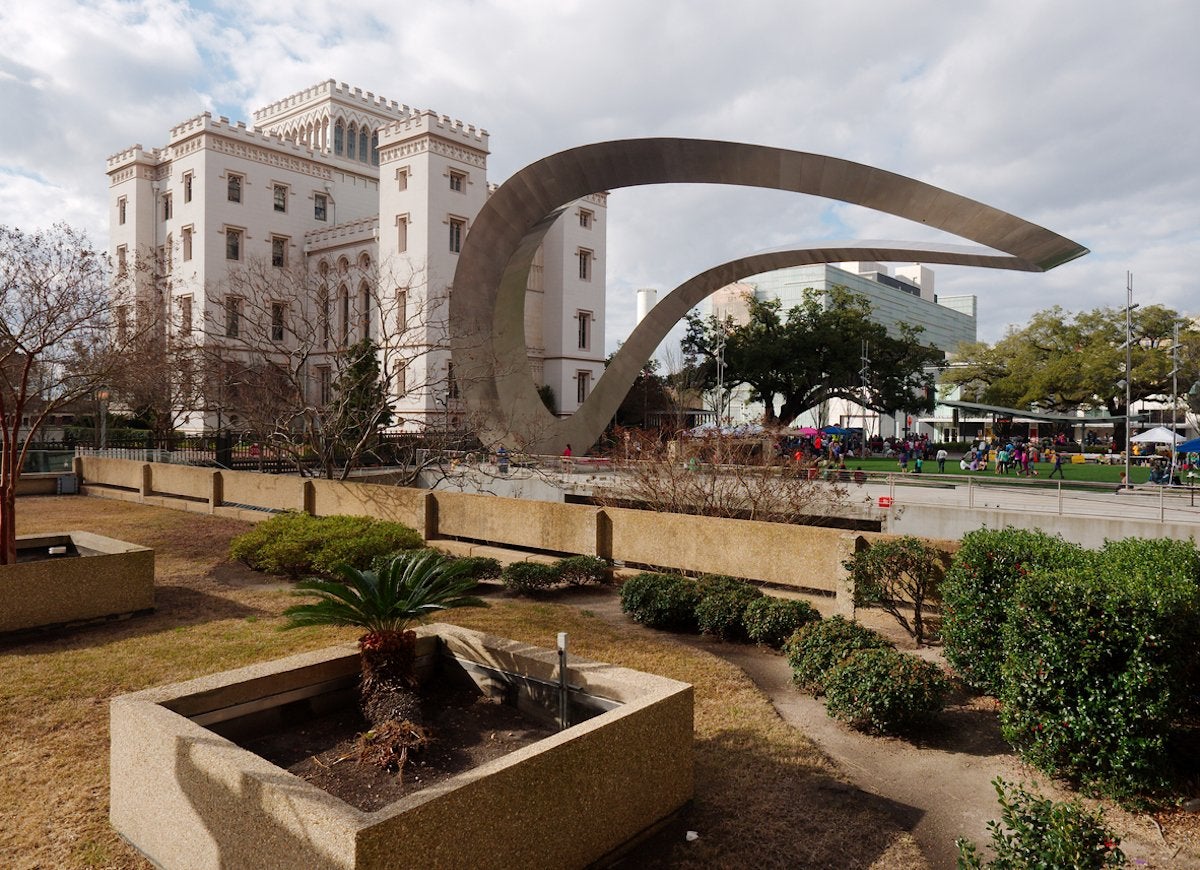
Thanks to a strong vision and multibillion-dollar public and private investments, Baton Rouge has blossomed. The influx of development bucks, together with business-friendly policies, has given rise to the Arts and Entertainment Cultural District, which is peppered with 52 restaurants and 20 bars.
Orlando, Florida
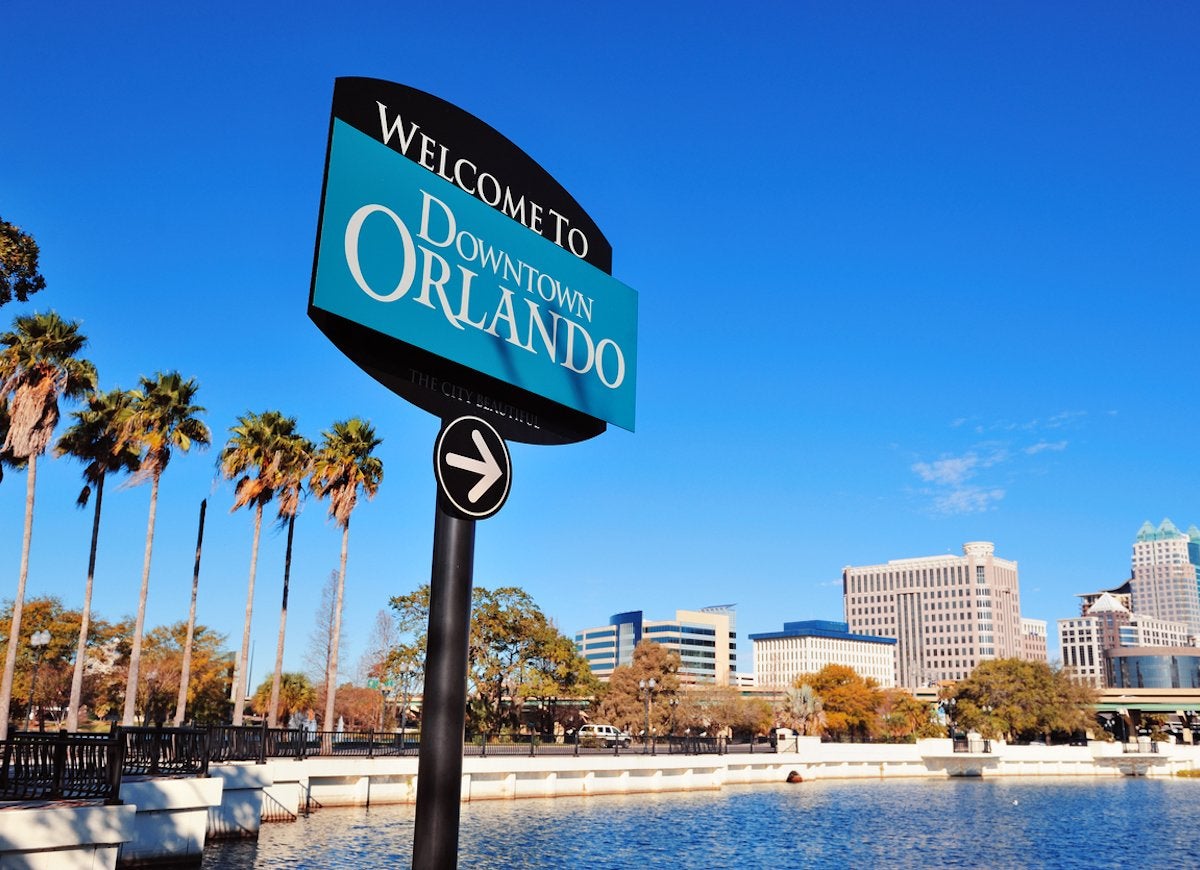
Heard of “clustering”? This approach to urban development is boosting the profile of downtown Orlando. Basically, the idea is to group complementary types of businesses together for maximum walkability and convenience. Goodbye strip malls, hello cafés and integrated work and shopping districts.
Columbia, South Carolina
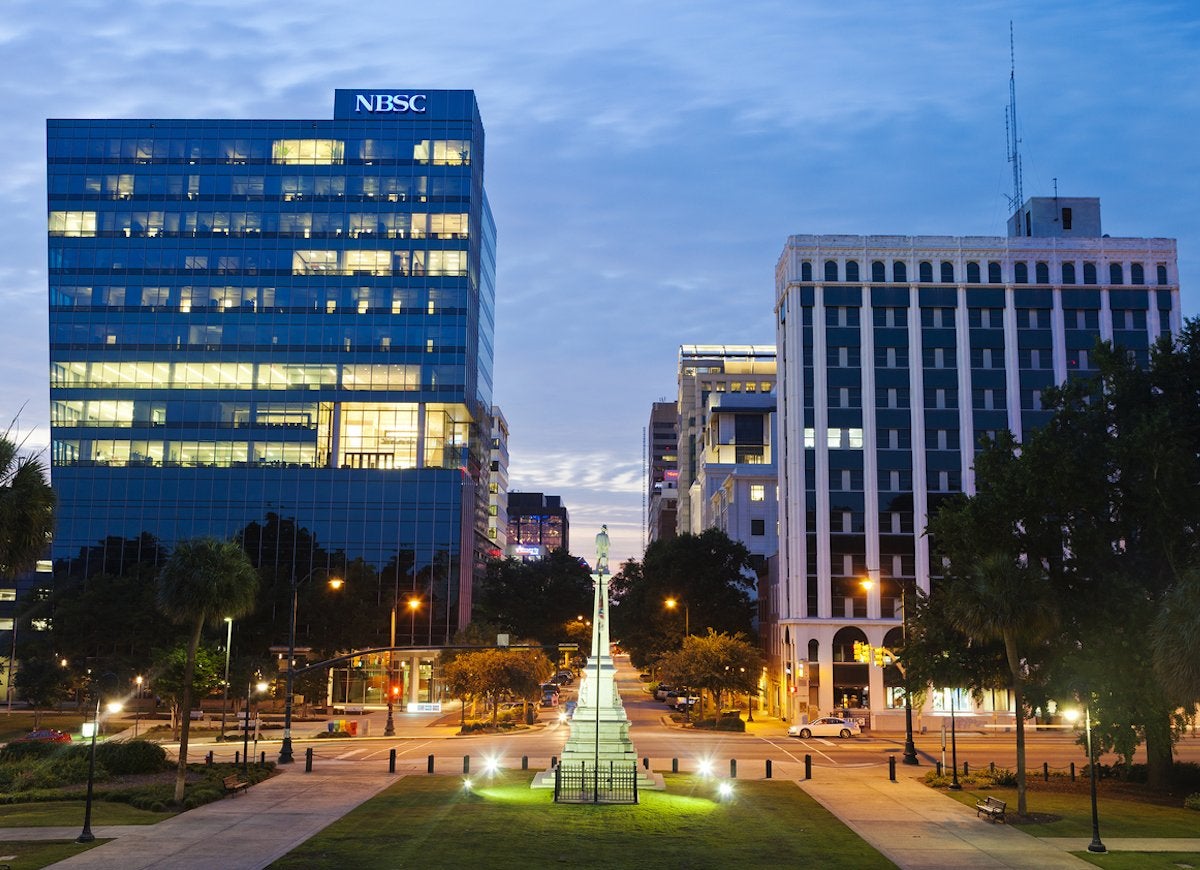
Another state capital that’s cultivating downtown appeal—and integrated living-work-leisure spaces—is Columbia, South Carolina. The focus of development is the BullStreet District, a $1.2 billion project anchored by Segra Park, formerly known as Spirit Communications Park, the home of the Columbia Fireflies minor league baseball team.
Oakland, California
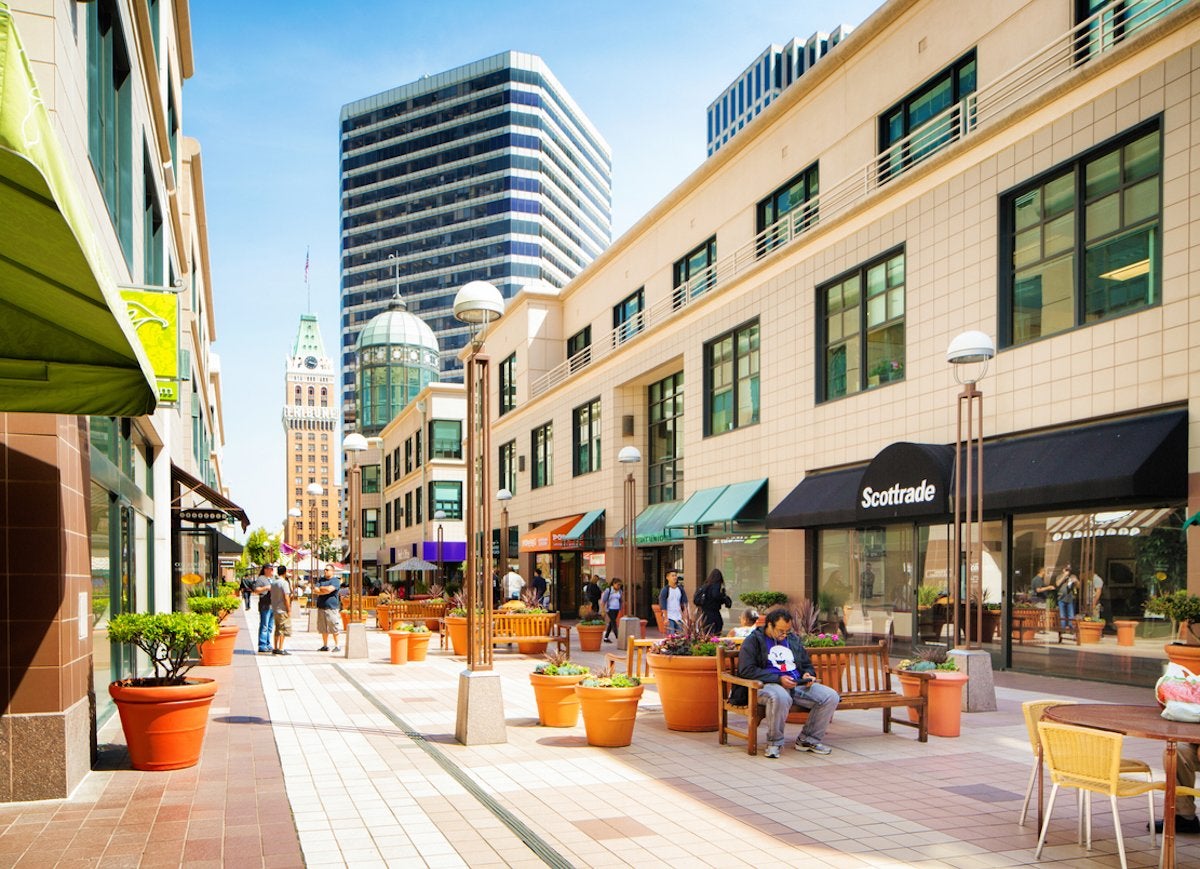
Oakland is yet another previously sketchy downtown that’s on the rise, thanks in part to crime-stopping community efforts and a stream of San Franciscans looking for cheaper work and living space. Oakland already has some corporate heavy hitters: Kaiser Permanente has been headquartered there since its founding in the 1940s, and the health giant plans to build a massive new headquarters in the city. As well, Oakland has been home to Pandora since 2000, although the streaming service is shifting some of its operations to Atlanta.
Columbus, Ohio
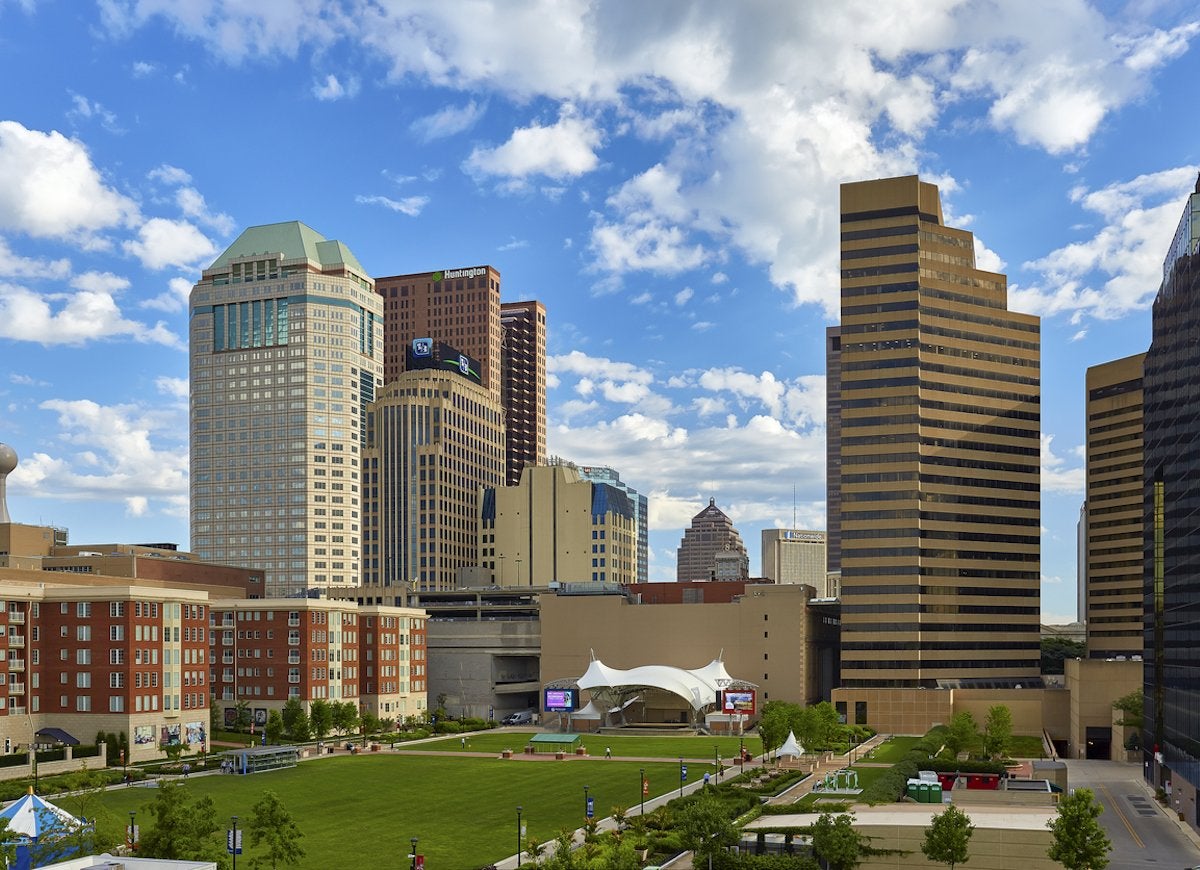
People are attracted to green spaces, so maybe a park could lift up an entire city. That was the thinking behind the renewal of Columbus, Ohio, which began in the 2010s. The result of these efforts? The Columbus Commons, a six-acre park that hosts more than 200 free events each year.
Related: 15 Cities Where You Get the Most Bang for Your Real Estate Buck
Biddeford, Maine
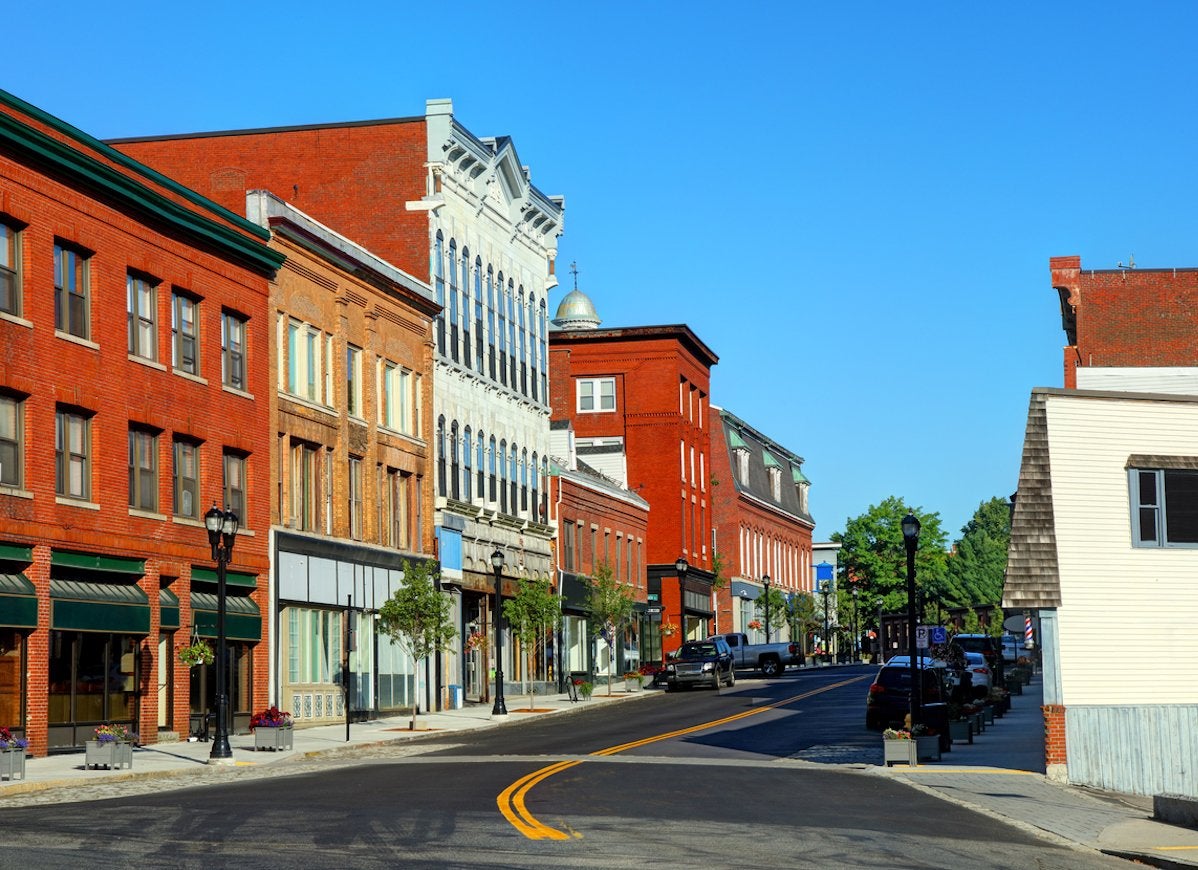
David Leckey believes in community-building so deeply that he founded the Orton Family Foundation, a Vermont-based nonprofit that has to date helped 66 towns—including Biddeford, Maine—revamp their city centers. In this former mill town, developers have embarked on projects that will transform industrial buildings into multipurpose living, leisure, and shopping districts in the hopes of attracting locals, new residents, and out-of-towners.
Related: 12 Things I Wish I Had Known Before Moving to a Small Town
